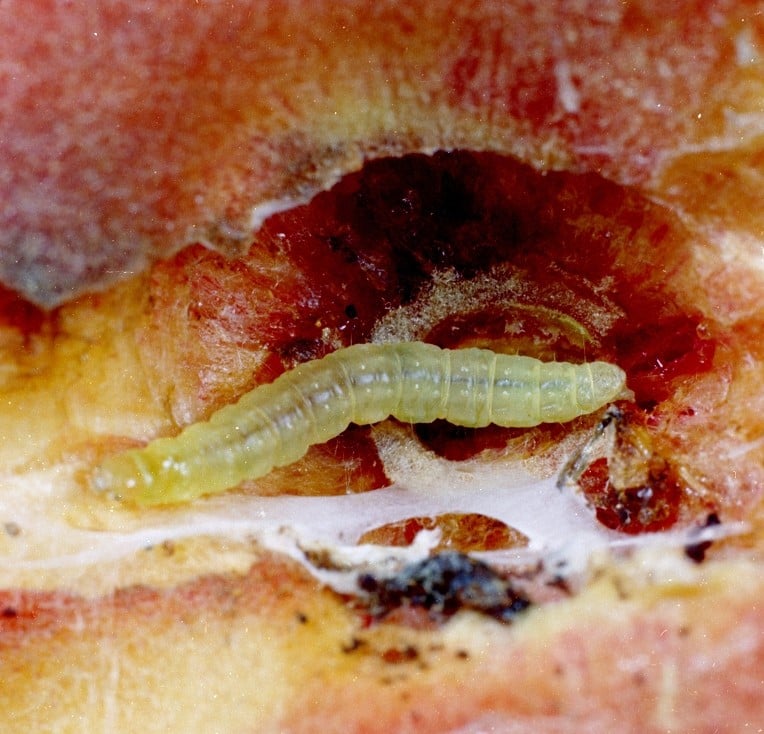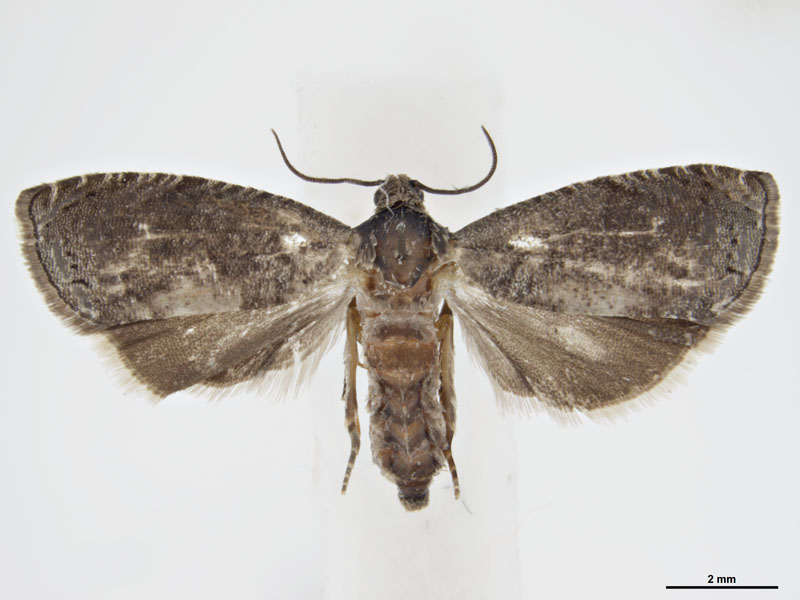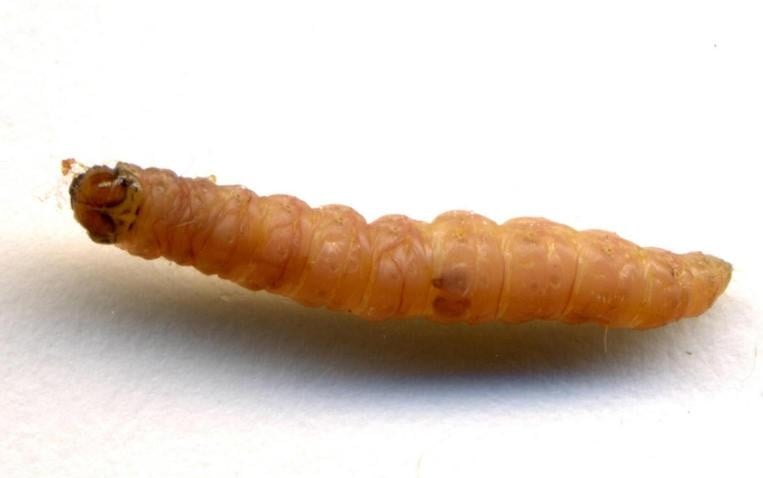What is oriental fruit moth?
Oriental fruit moth (Grapholita (Aspila) molesta) is a declared pest in WA. It is a serious pest of peach, nectarine, apricot and cherry fruit crops, capable of causing significant yield losses.
Western Australia is one of the few stone and pome fruit growing regions to remain free from this pest.
Early detection and reporting of suspected cases will help protect the WA tree fruit industries.
What plants are affected?
Peach, nectarine, apricot and cherry fruit are primary hosts of oriental fruit moth. Other fruits such as apple, pear and quince are also affected.
What do I look for?
- Larvae are approximately 12 mm long, pink to red with a dark brown head.
- Adult moths are brownish-grey with pale forewing patterning and 13 mm wingspan.
- They are active at night.
- External damage to fruit – round entry or exit holes, typically near the stem or on the side which may be plugged with gumming or reddish-brown frass.
- Internal damage to fruit – tunnels and frass where the larvae may also be present.
- Tree symptoms – dead, blackened shoot tips and bushy lateral shoot growth.
|
Oriental fruit moth larva and its damage to a peach Photo: Clemson University - USDA Cooperative Extension Slide Series, Bugwood.org |
 |
|
Peach tree with characteristic shoot damage Photo: Clemson University - USDA Cooperative Extension Slide Series, Bugwood.org |
 |
|
Adult oriental fruit moth Photo: Sarah McCaffrey, Museums Victoria |
 |
|
Oriental fruit moth larva Photo: Lesley Ingram, Bugwood.org |
 |
What damage can this pest cause?
Oriental fruit moth poses a serious threat to WA’s summer tree fruit industries.
- Infestation severely compromises fruit quality – it causes deformation, premature drop, and makes fruit unsellable.
- If left unmanaged, infestation rates can reach up to 100%, resulting in total crop loss and significant economic impact.
- Oriental fruit moth may spread specific fungal plant pathogens, contributing to fruit rot.
- New tree shoots may die and turn black which can cause increased lateral shoot growth and the tree to appear bushy. These factors reduce marketability of nursery stock.
Legal duty to report
Oriental fruit moth is not known to occur in WA.
Grapholita (Aspila) molesta (Busck, 1916) is a declared pest under section 12 of the Biosecurity and Agriculture Management Act 2007.
This means that any person who finds or suspects the presence of oriental fruit moth must report it to DPIRD.
WA's freedom from oriental fruit moth is supported by general and specific surveillance, and specific import requirements to prevent its entry.
How does oriental fruit moth survive and spread?
Oriental fruit moth originated in China and now has wide distribution overseas.
- Oriental fruit moth can complete up to 5 generations per year in Australia, allowing the population to build up quickly in favourable conditions.
- Mated adult females lay 50 to 200 eggs, typically on the underside of leaves near the growing tips. These eggs can be unintentionally spread with the movement of infested nursery stock or plant material.
- Larvae tunnel into shoots and fruits to feed. Typical infested fruit may support one or 2 larvae but fruit such as quince may support up to 12. Thus, infested fruit is a potential pathway of spread.
- The moth overwinters as cocooned, full-grown larvae, sheltered in tree fissures, under bark, in debris at the base of trees or within soil.
- Adult moths emerge from overwintering sites between August and October.
- Adult moths are capable of short-distance flight, enabling spread within and between orchards.
